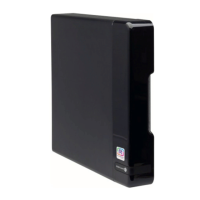
Do you have a question about the Nokia Alcatel-Lucent OXO Connect Series and is the answer not in the manual?
Provides an overview of the document's scope and purpose.
Details FCC and VCCI notices regarding electromagnetic interference.
Covers safety rules, declarations, and general recommendations for secure installation.
Introduces the OXO Connect as a business communication server and its range.
Describes the different OXO Connect platform models (Compact, S, M, L).
Provides a high-level overview of the system's installation architecture.
Details the available boards and options for OXO Connect systems.
Introduces the physical installation aspects of the OXO Connect unit.
Covers output connectors, cable types, and specific connection diagrams.
Covers connecting external power supplies, batteries, and UPS.
Details the automatic loading process via Cloud Connect.
Explains the manual process of loading country targets and license keys using OMC.
Guides through the initial system configuration using a desk phone.
Outlines the steps for configuring the system using the OMC application.
Explains the purpose and functions of the Software Licence Management feature.
Describes the role of MAIN and CTI software keys for system functions.
Introduces Cloud Connect Operation for deployment and remote management.
Explains how to establish VPN tunnels for remote connection via CCO.
Describes Rainbow as a cloud-based software system for telephony services.
Explains how to access and retrieve detailed information about the OXO Connect.
Covers the commissioning of various SIP desk phones.
Covers the commissioning of 8008 and 8018 DeskPhones.
Details the commissioning of Premium DeskPhones models.
Covers connecting the set, Bluetooth handset, and add-on modules.
Explains the commissioning process for the 8088 Smart DeskPhone.
Covers the commissioning of the Alcatel-Lucent 4019 Digital Phone.
Describes the hardware, connections, and configuration of the V24/CTI Interface Module.
Details the hardware, connections, and configuration of the AP Interface Module.
Explains the hardware, connections, and configuration of the S0 Interface Module.
Covers the description, placement, and configuration of DECT base stations.
Describes the IP-DECT system, its components, and installation.
Introduces PIMphony as a personal productivity tool for enhanced telephony usage.
Covers PIMphony Touch, a software client for tablets and computers.
Details how to extend the system with stations, modules, and upgrades.
Describes the installation, configuration, and licensing of the My IC Plugin for Outlook.
Details the default configurations and key functions for various desk phone models.
Explains default key functions for specific desk phone models based on market and mode.
Covers default functions for 8028/8029 Premium DeskPhones.
Lists the default programmable key functions for the IP Touch 4018 phone.
Provides information on default call routing and station settings.
Outlines the essential steps for updating the PBX software version.
Provides guidance on maintaining and replacing system batteries.
Recommends replacing batteries on specific boards every two years.
Advises on cleaning ventilation holes and the impact of fan failure.
Details the procedure and considerations for replacing a faulty CPU board.
Explains how to handle chassis failures and the implications for CPU replacement.
Covers the process of adding new boards or replacing existing ones.
Addresses the replacement of MSDB devices due to end-of-life or health status issues.
Explains how to replace RAM modules, specifically addressing unsupported sizes.